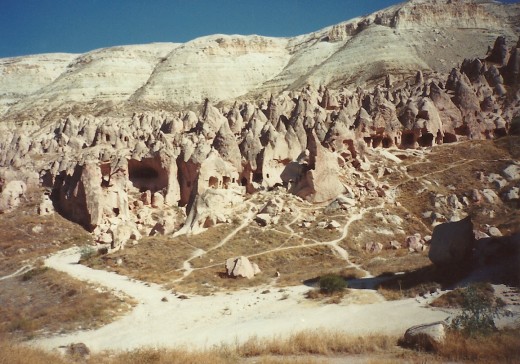- HubPages»
- Travel and Places»
- Visiting Asia»
- Western Asia
Travel in Turkey-- Fetiye, Kizkalesi, Ephesus, Capppadocia & More
I am writing this hub in response to ethel smith’s “invitation” to share more positive experiences on Turkish travel than what she and her husband experienced on their vacation to Marmaris, Turkey.
I was stationed in Incirlik Air Base, Turkey (pronounced like Injure-lick), during Desert Storm. I extended my obligation twice, for a total of 3 1/2 years because I loved it there. I did as much travel in Turkey as I could manage. I’ve overviewed some high points. I’ve made some attempts at phonetic clues, for pronunciation of some of the places and names. These are my own perspective, not a dictionary pronunciation.
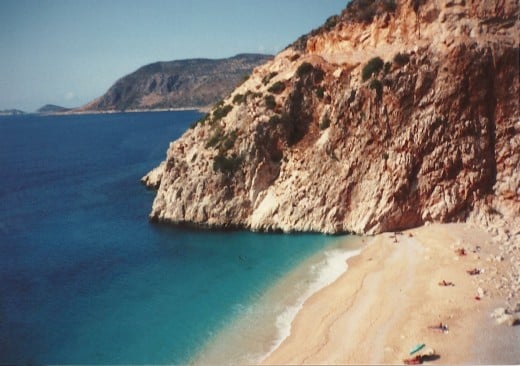
Travel in Turkey, and Fetiye
When my parents came to visit, a Turkish friend, Mehmet, who had a dolmuş (like a huge van, used for local public transportation, subsidized by the government) took us on a two week trip of Turkish travel. This was in mid-October, which was wonderful. It was still warm, but no longer scorching hot weather. Everything was still open (until 1 Nov), but not as crowded as during the summer. Memhet purposefully avoided Bodrum and Marmaris, both incredibly popular beach cities and resorts, but as ethel found out, very commercialized.
Our pick for “best beach town” was Fetiye (pronounced like Fĕh-Tē-ā, similar to the starting sounds of fetish), with turquoise water, uncrowded beaches, and mountain views. Fetiye is one of the places in Turkey where you see the burial tombs carved into the rock wall faces. ethel has a picture of these tombs in Marmaris.
Kizkalesi
Kizkalesi and Silifke
Mehmet and his brother had a pension in Kizkalesi (like kiss-că-lay-see) , or “Castle by the Sea” which is near Silifke (like Sĭ-leaf-kay) and only (a hair-raising) 85 miles from Incirlik, so I've been there many times. At that time, there were only older, small hotels and pensions there. Silifke had condos, but not the “little city” feel of Kizkalesi, with its shops and restaurants. Silifke did however have a large seafood restaurant that was very good. Still, like most of the beach resorts, Kizkalesi and Silifke were best in the off season.
We had many wonderful times at Kizkalesi. Another Turkish friend, Ali, would take us in his boat out to the castle ruins off shore, on its own little island. Mehmet would prepare a barbecue of kebap and köfte (kurff-tĕ).
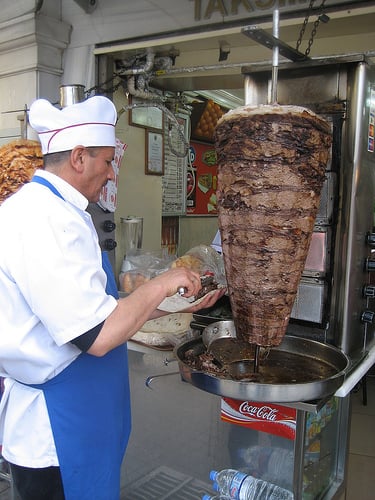
Izmir, Turkey
I love Izmir (Ĭz-mere), Turkey, which is on the Aegean. I’m not saying there are no beaches, but it’s not really a beach town. Izmir is near the cruise ship stop, Kuşadasi (Koosh-ă-doshi). I traveled to Izmir 6 to 8 times a year for temporary duty. I highly recommend that you eat at the Deniz Restaurant near the Nato building, on the “First Kordon”. Start out with the fried calamari, which in my opinion, is the best on the planet. Order çipura (like chĭ-poor-ah), which is sea bream, or grilled sea bass. Don't forget the chocolate soufflé, which you have to order when you order your meal because it takes 45 to 60 minutes. Canakkale (John-cah-lay) white wine is nice if you like dry wine. After dinner, enjoy walking along the wide sidewalk next to the Aegean.
While in Izmir, also make a visit to “Döner (like doe-nair) Alley”. I recommend the Iskender Döner, which is essentially gyro with tomato sauce and yogurt sauce. Be sure and visit some carpet shops. Sit back, enjoy the hot Turkish tea, called çay (chī), carpets, and fellowship. The Bazaar is away from the Kordons, and has dozens of gold shops if you’re into jewelry.
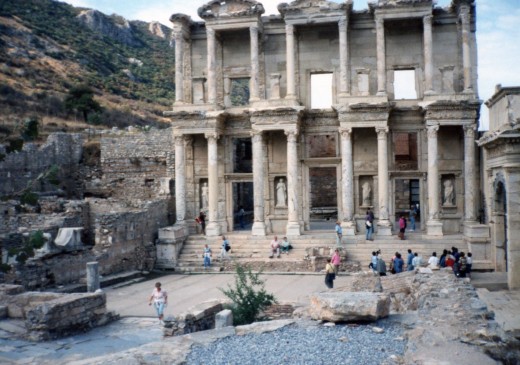
Ephesus and Pamukkale
From Izmir it’s two hours or less to Ephesus or Pamukkale. I have visited (the extensive ruins of) Ephesus about five times because it’s so amazing. Nearby are the ruins of Artimus’ Temple, one of the 7 Wonders of the Ancient World.
For your Turkish travel, I highly recommend a trip to Pamukkale, and staying at the Hotel Pamukkale. The pool is always open and warm, and littered with ancient “debris”. You can visit the nearby ruins of Heiropolis, which has an impressive necropolis and small amphitheater. I was totally unimpressed with the food in Pamakkale though.
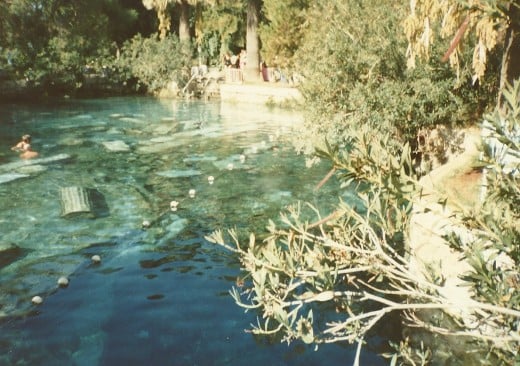
Museum of Anatolian Civilizations
Ankara, Turkey
I also traveled to Ankara 6 to 8 times a year. Ankara, the capital, is in central Turkey, and is a little more traditional than Izmir. It gets pretty cold in Ankara in the winter, and the snow lingers on the ground for months.
The food experience is very different in Ankara. Order the “rock” or “salt fish” for a large party. There’s another specialty that I forget the name of. It’s honeycomb and cultured cream, and you spread each on pita.
Get an inexpensive Byzantine rubbing from the Anatolian Museum in Ankara. I got a huge chariot scene for $10 in 1992, and got it framed in Adana for $50! Eat near the museum. There is a dish you have to order 24 hours ahead, where they put lamb in a crock and turn it face down in a pan with rice. The juices from the meat cooks into the rice. Manti, the Turkish version of tortellini, is also a specialty.
Climb the castle ruins in town while you’re in Ankara. Shop and have some sage çay.
History of Konya and the Whirling Dervishes
Dervishes Ceremony in Konya
Konya, Turkey
Konya is a few hours from Ankara. If you have the chance, go see the Whirling Dervishes. There is only a narrow window of time each year to see them however. As I recall, it was in winter. My physical therapist colleague and I took a tour from the base in Ankara while we were on temporary duty there.
When we saw the Dervishes, they started with about two hours of politicians yapping. Thank goodness I had a good book in my bag! The Whirling Dervishes were worth it though. I though the show was beautiful. I have included a video that explains a little bit about Konya, Mevlana, and the Whirling Dervishes. I also included another short clip of an actual Dervish performance, which is done by a group of men.
Cappadocia
Cappadocia is a unique and interesting place. The rock formations are referred to as “fairy chimneys” because the wind has swept them over time into a dome shape with pointed peak. There are hundreds of them, many of which were carved out and used as monasteries. Definitely worth including in your Turkish travels. Mehmet took us to a nearby hotel that had several fairy chimney rooms, so of course we had to stay in one.
